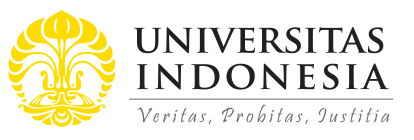
Abstract
The children of today’s generation are considered as digital natives, which means that they have the capacity to navigate technological terrains to the best of their abilities and create online communities in new storyworlds. Minecraft and Roblox, two sandbox open-world mobile games, are manifestations of such ability to create worlds, survive in difficult gaming situations, face opponents in combat, and interact with players within a community. Even more so, such transmedia engagements allow the child participants, as evidenced in this study, to transact with players and the app itself to introduce new playstyle strategies that complement or subvert the gameplays originally set by developers. This study aims to explore how child users navigate through various transmedia storyworlds to socially construct shared meanings of their engagements. By proposing a novel “techno-immersion” as a method of data construction, the researcher joined four child participant–characters in their journey as they traverse from one gaming storyworld to another. Several transactions emerge in such a transmedia engagement, including player-to-player negotiation of playstyle; diverging playstyle away from prescribed gameplay; harnessing the gameplay rules to achieve personal goals in engagement; player-to-player and player-to-media negotiations to create new gameplay; and interaction as means of negotiation. It was also found that child users of mobile games are empowered in harnessing the rules of the game to their personal gaming goals and freeing from the binds that limit them from their engagements, towards becoming fully realized child characters in their transmedia storyworlds.
References
Alper, M., & Herr-Stephenson, R. (2013). Transmedia Play: Literacy Across Media. Journal of Media Literacy Education, 52, 366-369. www.jmle.org
Bijker, W. (1995). Of bicycles, bakelites, and bulbs: Toward a theory of sociotechnical change. Cambridge, MA: MIT Press.
Brotosusilo, A., & Soedrajad, M. R. (2020). Qualitative study of obstacle to community empowerment in waste management: Community perspective in DKI Jakarta. In E3S Web of Conferences (Vol. 211). EDP Sciences.
https://doi.org/10.1051/e3sconf/202021103018
Bryn, S. (2011). Stop bullying now! A federal campaign for bullying prevention and intervention. Journal of School Violence, 10(2), 213-219.
https://doi.org/10.1080/15388220.2011.557313
Chaudron, S. (2015). Young Children (0-8) and Digital Technology: A qualitative exploratory study across seven countries. Technical Report by the Joint Research Centre of the European Commission. https://doi.org/10.2788/00749
Connelly, M. & Clandinin, D.J. (1990). Stories of Experience and Narrative Inquiry. Educational Researcher, 19(5), 2-14.
https://doi.org/10.3102/0013189X019005002
Divayana, D. G. H., Ariawan, I. P. W., & Suyasa, P. W. A. (2020, September). Development of E-Learning Content Based on Kelase-Tat Twam Asi in Supporting Learning During the Covid-19 Pandemic. In 2020 4th International Conference on Vocational Education and Training (ICOVET) (pp. 41-46). IEEE.
https://doi.org/10.1109/ICOVET50258.2020.9230263
Fosu, A. (2019). Readiness of Universities for the 21st Century digital economies: A look at selected lecturers from Universities in Buffalo City Metropolitan in Eastern Cape Province South Africa. International Journal of Community Development and Management Studies, 3, 065-077.
https://www.informingscience.org/Publications/4454?Type=JournalArticles&JournalID=54
Frank, A. W. (2010). Letting Stories Breathe: A Socio-Narratology. Chicago: University of Chicago Press.
Haraoka, N. (2018). Digital society—Issues & challenges. Japan SPOTLIGHT. https://www.jef.or.jp/journal/
Hjorth, L, & Richardson, I. (2014). Gaming in Social, Locative, and Mobile Media. London: Palgrave Macmillan. https://doi.org/10.1057/9781137301420
Huang, K. T., Ball, C., Francis, J., Ratan, R., Boumis, J., & Fordham, J. (2019). Augmented versus virtual reality in education: an exploratory study examining science knowledge retention when using augmented reality/virtual reality mobile applications. Cyberpsychology, Behavior, and Social Networking, 22(2), 105-110. https://doi.org/10.1089/cyber.2018.0150
Ito, M., Horst, H., Bittanti, M., Boyd, D., Herr- Stephenson, B., Lange, P. G., ... & Robinson, L. (2008). Living and learning with new media: summary of findings from the Digital Youth Project. John D. and Catherine T. Macarthur Foundation. https://files.eric.ed.gov/fulltext/ED536072.pdf
Jenkins, H. (2003) Transmedia Storytelling. MIT Technology Review.
http://www.technologyreview.com/Biotech/13052/
Jenkins, H., Ford, S., & Green, J. (2013). Spreadable Media. New York: New York University Press.
Jin, D. Y, & Schneider, F. (2016). The dynamics of digital play in Asia. Asiascape: Digital Asia, 3. https://doi.org/10.1163/22142312-12340045
Lara, C. S., Crispín, A. F., & Téllez, M. C. L. (2018). Participatory rural appraisal as an educational tool to empower sustainable community processes. Journal of Cleaner Production, 172, 4254-4262. https://doi.org/10.1016/j.jclepro.2017.08.072
Levin, I., & Mamlok, D. (2021). Culture and society in the Digital Age. Information, 12(2), 68. https://doi.org/10.3390/info12020068
Livingstone, S., & Third, A. (2017). Children and young people’s rights in the digital age: An emerging agenda. New Media & Society, 19(5), 657–670. https://doi.org/10.1177/1461444816686318
Long, G. (2007). Transmedia Storytelling: Business, Aesthetics and Production at the Jim Henson Company. Massachusetts Institute of Technology. https://cmsw.mit.edu/
Piantanida, M. & Garman, N. B. (1999). The qualitative dissertation: a guide for students and faculty. Sage: London.
Prensky, M. (2003). Digital game-based learning. Computers in Entertainment, 1(1), 21. https://doi.org/10.1145/950566.950596
Reed, M.S., Vella, S., Challies, E., de Vente, J., Frewer, L., Hohenwallner-Ries, D., Huber, T., Neumann, R.K., Oughton, E.A., Sidoli del Ceno, J. and van Delden, H. (2018). A theory of participation: what makes stakeholder and public engagement in environmental management work?. Restoration Ecology, 26, S7-S17. https://doi.org/10.1111/rec.12541
Roblox Devforum. (2020). Improvement to Game Search Ranking.
https://devforum.roblox.com/t/improvements-to-game-search-ranking/673608
Rogers, T., & Marshall, E. (2012). On the Road: Examining Self‐Representation and Discourses of Homelessness in Young Adult Texts. Journal of Adolescent & Adult Literacy, 55(8), 725-733. https://doi.org/10.1002/JAAL.00087
Rosyada, A., & Retnomurti, A. B. (2017). The Use Of Positive Language On Children Education To Build Children’s Positive Behaviour. Scope: Journal of English Language Teaching, 1(1), 1-8.
Sá, M. J., Santos, A. I., Serpa, S., Ferreria, C.M. (2021). Digital literacy in digital society 5.0: Some challenges. Academic Journal of Interdisciplinary Studies, 10(2), 1–9. https://doi.org/10.36941/ajis-2021-0033
Sayuno, C. M. M. (2012). Discouragement, Distraction, and Defeat: A Variation Analysis on Trash Talk by Child Online Gamers (Unpublished research paper). Department of Humanities, University of the Philippines Los Baños.
Scolari, C. A., & Ibrus, I. (2014). Transmedia critical: Empirical investigations into multiplatform and collaborative storytelling. International Journal of Communication, 8(1), 2191-2200. https://ijoc.org/
Switzky, L. (2016). Transmedia Ethics. Theater, 46(2), 55-67.
https://doi.org/10.1215/01610775-3547671
Telles, J. P. R. (2014). Ba[Li]Ta: Portrayal of Child Victims and Suspects in 24 Oras News Reports on Crimes Against Children. Philippine Communication Society Review.
Uboñgen, P. R. A., & Timoteo, N. S. (2014). Seeing Children’s TV (SeeCTV): The Values Presentation of the Children’s Shows of ABS-CBN2, GMA7, and TV5. Philippine Communication Society Review.
United Nations Children’s Fund Philippines and Asian Institute of Journalism and Communication. (2011). Internet Access and Use by Filipino Children. Philippine Communication Society Review.
Veugen, C. (2016). Assassin’s Creed and Transmedia Storytelling. International Journal of Gaming and Computer-Mediated Simulations, 8(2), 1–19.
Recommended Citation
Sayuno, Cheeno Marlo
(2021).
Gameplays Versus Playstyles: The Social Construction of Transmediated Communities Among Filipino Children Gamers in Minecraft and Roblox.
ASEAN Journal of Community Engagement, 5(2), 289-314.
Available at: https://doi.org/10.7454/ajce.v5i2.1110
Included in
Communication Technology and New Media Commons, Digital Humanities Commons, Early Childhood Education Commons







